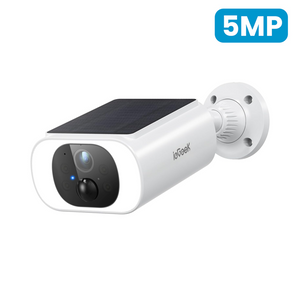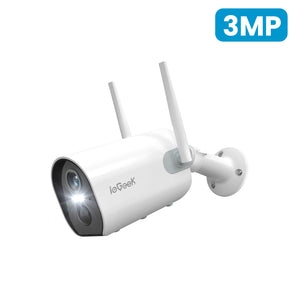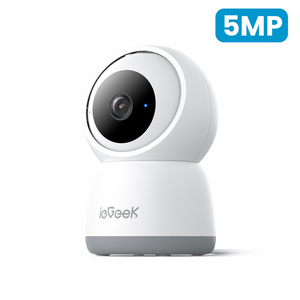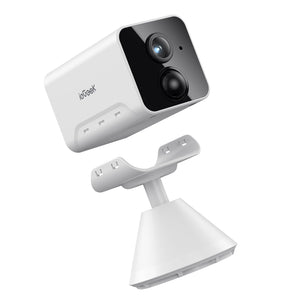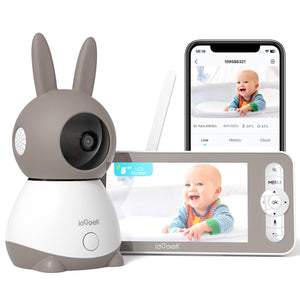Keeping homes safe and secure is a top priority for many across the United Kingdom. With the advent of advanced home security cameras, particularly motion sensor cameras equipped with infrared night vision, homeowners are now more empowered than ever to protect their property. These surveillance systems are not just about recording criminal activity; they act as a deterrent, assuring peace of mind for individuals and families alike. Especially for outdoor security, night vision capabilities ensure that the cover of darkness is no aid to intruders, providing clear visibility around the clock.

Understanding Motion Activated Cameras with Night Vision
In an era where security is paramount, understanding the inner workings of motion activated cameras with night vision is crucial. These devices have been fashioned to offer impeccable surveillance, acting as vigilant sentinels guarding homes and businesses alike. But how exactly do they function, and what features render them effective in the blanket of night?
Principles of Motion Detection Technology
At the heart of these cameras lie PIR sensors, the linchpins responsible for detecting motion. These sensors, typifying the concept of motion capture, utilise infrared technology to sense temperature changes in the environment, activating the camera to record the moment an object, animal or person interrupts the infrared field. The profound sensitivity of these sensors ensures that even the slightest movement does not escape without notice.
Benefits of Integrating Night Vision
Incorporating night vision into a camera significantly extends its vigilance into the realm of darkness. Night vision, predominantly powered by infrared technology, enables the camera to produce clear footage despite the absence of visible light. This capacity for visibility in darkness not only helps in recording events objectively but also fortifies the security of a property during the most vulnerable hours – the night.
Key Features to Look For in A Night Vision Camera
When shopping for a night vision camera, several must-have camera features should be on your checklist. High resolution ensures that the clear footage obtained is detailed enough to aid in identification and analysis. An expansive field of view ensures a wide coverage area, diminishing blind spots and amplifying the effectiveness of the camera. With cameras like ieGeek Floodlight Security Camera ZY-E1 and Battery Camera ZY-C1 leading the market, it's important to look for robust connectivity options and ample storage capabilities, allowing for secure access to your recordings as needed. By recognising these essential characteristics, buyers can make an informed decision, ensuring their chosen solution enhances their overall security architecture.
Top Motion Activated Cameras for Enhanced Security
When enhancing home security, selecting the right type of motion activated camera can provide a robust defence against intrusions. Focusing on pioneering models, such as the ieGeek Floodlight Security Camera ZY-E1 and the ieGeek Battery Camera ZY-C1, we explore the comprehensive benefits of integrating these devices into your home surveillance regime. Whether for indoor or outdoor monitoring, these cameras are designed to offer unparalleled security vigilance around the clock.
ieGeek Floodlight Security Camera ZY-E1
The ieGeek Floodlight Security Camera ZY-E1 represents a considerable advancement in outdoor security surveillance. Harnessing the power of bright floodlights, this camera illuminates the covered area, making it a formidable deterrent against potential intruders. With its robust floodlighting combined with a high-definition vision, the ZY-E1 camera ensures clear captures of nighttime activities, offering homeowners peace of mind for their domestic sanctuaries.
Battery Camera ZY-C1
Mobility and ease of installation stand at the forefront with the ieGeek Battery Camera ZY-C1. As a wireless surveillance option, the ZY-C1 stands out for its battery-powered operation and flexibility in placement. This makes it an ideal solution for those seeking fuss-free installation without the constraints of wiring. The camera translates effortless setup into efficient security, making it perfect for monitoring parts of the home where wiring may be challenging or intrusive.
Comparing Wired and Wireless Options
Choosing between wired and wireless surveillance often boils down to a balance between reliability and convenience. While wired cameras like the Floodlight Security Camera ZY-E1 are often praised for their stable connections, wireless cameras offer a high degree of flexibility and less complex installation. For those who prioritise ease of adaptation to various environments and structures, battery-powered cameras like the ZY-C1 provide a significant advantage. Ultimately, the decision may be swayed by the need for either uninterrupted surveillance coverage or adaptable, no-fuss monitoring for dynamic indoor and outdoor scenarios.
Selecting the Right Position for Your Night Vision Camera
The strategic placement of your night vision camera is paramount in maximising its efficiency in surveying your property and safeguarding against intrusions. Whether you've chosen the robust illumination of the ieGeek Floodlight Security Camera ZY-E1 or the versatile mobility of the Battery Camera ZY-C1, optimal positioning is key to expanding your field of vision and protecting blind spots.
For effective camera installation, secure mounting should be a top consideration. The camera must be affixed in a location that is beyond the reach of potential vandals and is sheltered from environmental elements, yet has a clear, unobstructed perspective of the area under surveillance. Height is a crucial factor; a mounted position of around 2.5 to 3 meters above ground level often provides a balance between accessibility for maintenance and security from tampering.
When contemplating the ideal spot for your camera, consider the 'choke points' or most frequented areas like entrances, driveways, and paths leading up to the home. Protecting these vulnerable points is essential, and the field of vision should cover these ingress routes comprehensively. Equally, the peripheral view should be analysed to address any potential blind spots where an intruder could evade detection.
Ultimately, periodic assessments of camera positioning in correlation with the spaces they guard will ensure a tight-knit surveillance network. Homes evolve; bushes grow, and external additions might alter the effectiveness of your initial setup. Conduct routine checks to ensure that the camera installation continues to match the evolving landscape, maintaining an unyielded watch over your domestic domain.
Conclusion
In the fabric of contemporary home security, night vision cameras have woven a thread of reassurance and uncompromised vigilance. Their remarkable capabilities keep watch over homes during the hours when security breaches are most feared – the night. Seamlessly integrating within the smart home ecosystems, these surveillance solutions represent a leap towards enhanced security, with the dual benefits of deterring unwanted activity and providing clear-cut evidence when needed.







